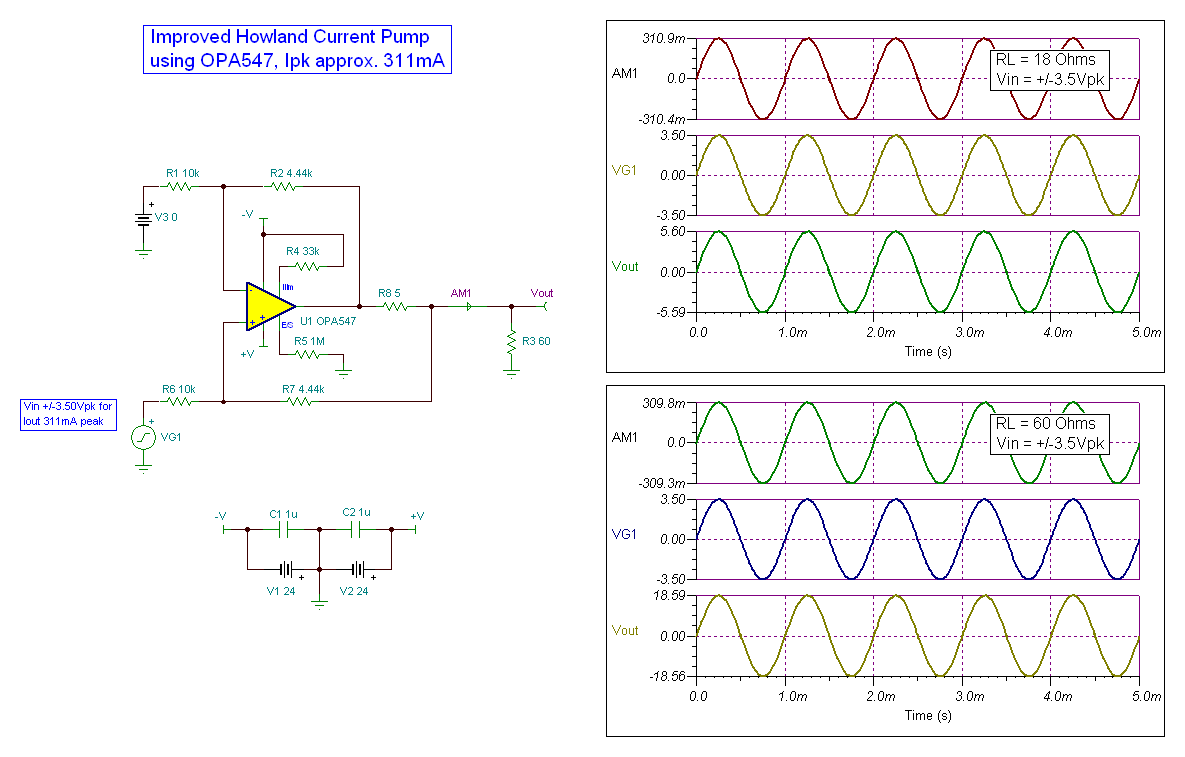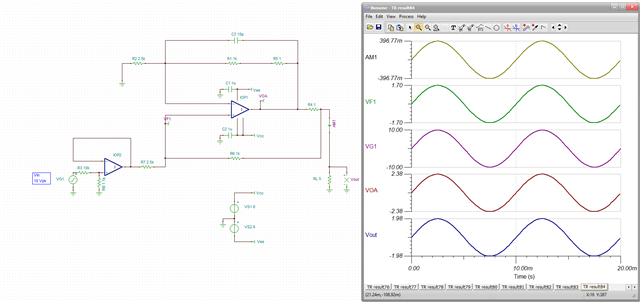Other Parts Discussed in Thread: ALM2402-Q1, ALM2403-Q1, OPA567, ALM2404-Q1, OPA593
Tool/software:
Hi,
I want to design a constant AC current source of current variable upto +/-400mA.
The frequency of the current source will be max 100Hz.
Can somebody tell me whether Ti has a readymade solution for this?
I came across Improved howland current pump using OPA547 for Ipk approx.311mA, attached below. But we required for +/-400mA and input volatge range is +/-10V.Could you please share the relevant circuit for this?
e2e.ti.com/.../constant-ac-current-source
















